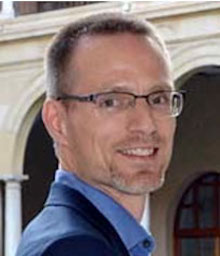
Frank A.J.L. Scheer, Ph.D.
Professor of Medicine, Brigham and Women's Hospital
Professor of Medicine, Harvard Medical School, Faculty of Arts & Sciences
Harvard Title
Professor of Medicine
Administrative and Hospital Titles
Neuroscientist, Division of Sleep and Circadian Disorders, Departments of Medicine and Neurology, Brigham and Women's Hospital
Director, Medical Chronobiology Program, Brigham and Women's Hospital
Senior Investigator, Division of Sleep and Circadian Disorders, Departments of Medicine and Neurology, Brigham and Women's Hospital
Address
Medical Chronobiology Program, Division of Sleep and Circadian Disorders, BWH
221 Longwood Avenue (BLI-044)
Boston, MA 02115
Publications View
Acute effects of bright light exposure on cortisol levels.
Authors: Jung CM, Khalsa SB, Scheer FA, Cajochen C, Lockley SW, Czeisler CA, Wright KP.
J Biol Rhythms
View full abstract on Pubmed
J Biol Rhythms
View full abstract on Pubmed
Effects of circadian disruption on the cardiometabolic system.
Is there a circadian variation of epileptiform abnormalities in idiopathic generalized epilepsy?
Influence of the Circadian System on Disease Severity.
Adverse metabolic and cardiovascular consequences of circadian misalignment.
Authors: Scheer FA, Hilton MF, Mantzoros CS, Shea SA.
Proc Natl Acad Sci U S A
View full abstract on Pubmed
Proc Natl Acad Sci U S A
View full abstract on Pubmed
Reduction of scale invariance of activity fluctuations with aging and Alzheimer's disease: Involvement of the circadian pacemaker.
Authors: Hu K, Van Someren EJ, Shea SA, Scheer FA.
Proc Natl Acad Sci U S A
View full abstract on Pubmed
Proc Natl Acad Sci U S A
View full abstract on Pubmed
The circadian pacemaker generates similar circadian rhythms in the fractal structure of heart rate in humans and rats.
An endogenous circadian rhythm in sleep inertia results in greatest cognitive impairment upon awakening during the biological night.
The endogenous circadian pacemaker imparts a scale-invariant pattern of heart rate fluctuations across time scales spanning minutes to 24 hours.
The suprachiasmatic nucleus functions beyond circadian rhythm generation.